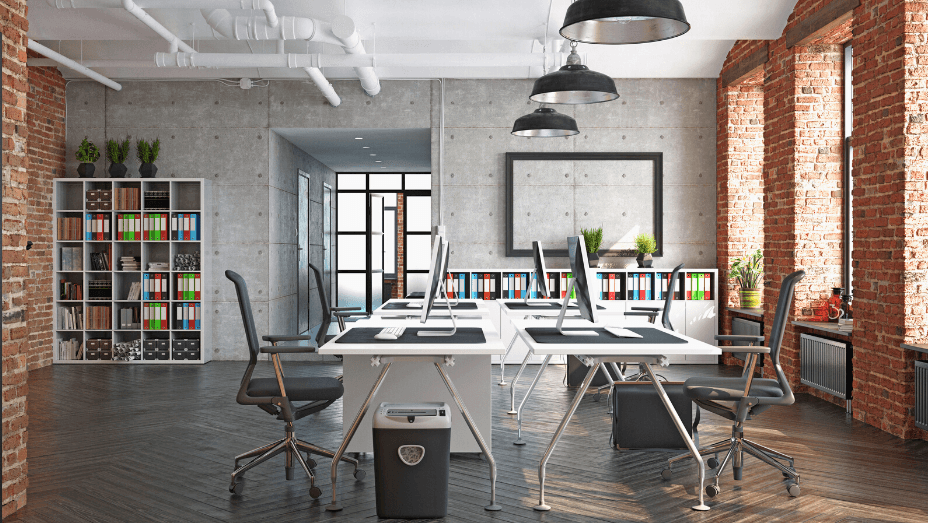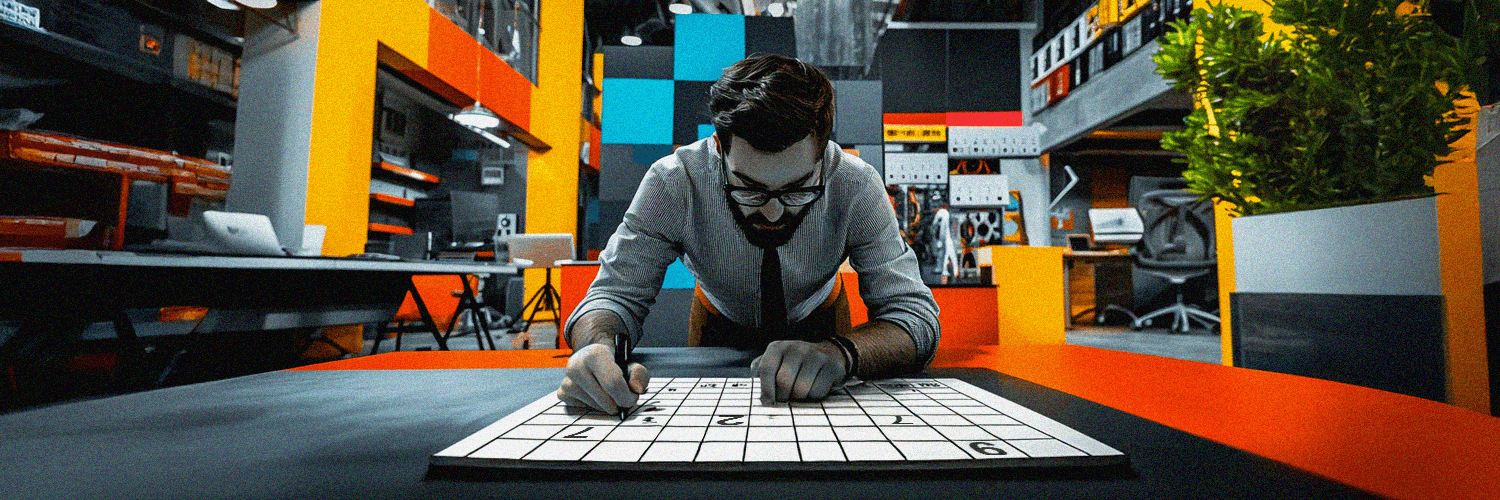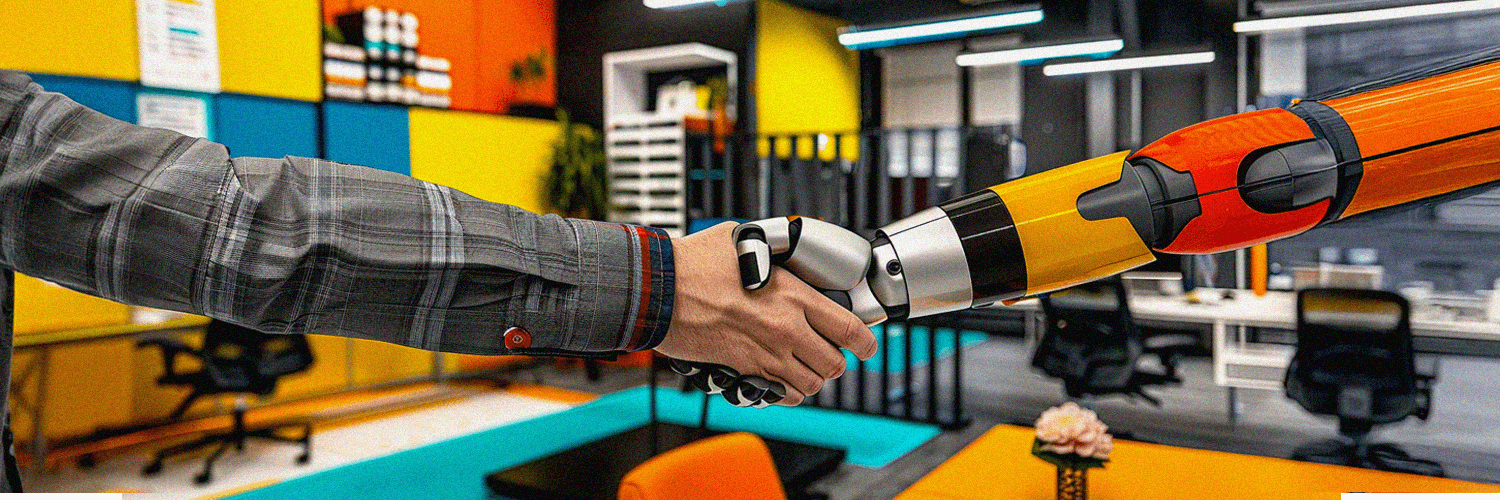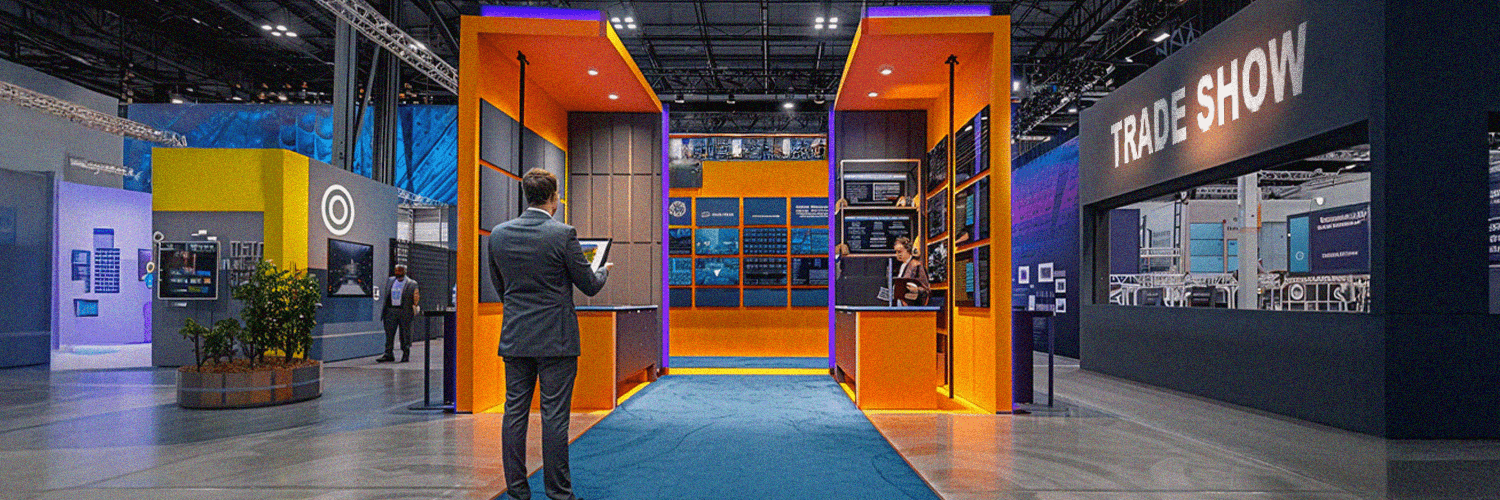The office workspace is no longer a traditional, centralized place of business. The adoption of remote work during the pandemic completely shifted employees' expectations about the office and it has become more important than ever to create spaces with purpose. Which is why companies nowadays are rethinking basic tenants of workplace design with an eye towards the core reasons for which people want to go back to the office.
What is Activity-Based Working (ABW)?
It’s becoming increasingly popular among businesses to adopt a relaxed culture and flexible working environment. Traditional offices with one open-plan room or individual offices are starting to become obsolete as they restrict workers to one floor or workstation and can be detrimental to concentration and productivity. More and more companies started redesigning their office spaces to embrace an activity-based working environment.
Activity-based working (AWB) is a work style that allows employees to choose from a variety of settings according to the nature of what they are doing, combined with a workplace experience that empowers them to use those spaces throughout the day. It involves the creation of different rooms and workstations different from an average desk. Each activity area serves a purpose be it for relaxation, concentration or collaboration.
While ABW is a natural fit with our on-demand culture, the concept is not quite new. Robert Luchetti, an American architect co-invented, back in 1983, the idea of creating “activity settings” for a variety of office tasks, such as typing or conducting meetings. While ABW didn’t quite take off in America at the time, countries like Australia, Denmark, the Netherlands, and Sweden gladly adopted it.
The term “activity-based working” was used in "The Art of Working" by Dutch consultant Erik Veldhoen. In the 1990s, Veldhoen + Co. partnered with Interpolis, one of the biggest insurance companies in the Netherlands, to implement activity-based working throughout their offices. After understanding the true flexibility and freedom it afforded their employees, Interpolis got rid of fixed desks and encouraged managers to give employees complete autonomy to choose when and where they worked, and for how long.
Creating a space where employees want to come to work is not just about creating an open space and adding a few couches to the common room. Activity-based workplace environments give employees the flexibility they’ve come to expect while helping you manage costs in an environment where office occupancy varies from day to day.

Common Examples of Activity-Based Working in Practice
“Today’s most effective management styles are built on trust and autonomy rather than on command and control. Physical space, then, can reinforce or contradict these efforts,” says Claire Rowell, senior lead of applied research and cultureOS at WeWork. “For example, if your employees feel pressure to sit or stand in one location all day, every day, they may start to wonder, “Does my employer value me based on my performance or my presence in the office?”
ABW is very different from a traditional workplace. “Traditional” could mean cubicle offices to some; to others, it could mean open-plan desks. In today’s office reality, it actually means “inflexibility” and it no longer makes sense. Employees perform at their best when companies empower them to work when, where, and how they want to. A research by Veldhoen + Company showed a 17% improvement in overall workplace satisfaction, 13% increase in individual productivity, 8% growth in team productivity, 11% gains in organization culture and 4% boost in sense of community in an activity-based workplace.
Activity-Based Working Examples by Companies
From technology giants like Microsoft, Facebook or LinkedIn, to flexible workspace operators, activity-based working has helped increase productivity and drop real-estate costs. Here are some examples:
- Microsoft’s Amsterdam, Netherlands office, called Microsoft NL, is an excellent example of a new ABW office. Working with the Veldhoen + Company, the design of this five-floor building improves work/life balance for its employees. It also uses technology to improve productivity. The result: besides no assigned offices or desks, a mix of office zones, and meeting spaces and open and enclosed spaces that all act as a ‘catalyst’ for transparency and connection - a 25% productivity gain and a 30% drop in real-estate costs.
- LinkedIn’s Workplace Lab in Sunnyvale, California is another unique and flexible space designed with employee experience at the forefront. Focusing on a human-centered design, this work setting was created by first testing and experimenting with new designs, to help save time and money.
- Uber has taken a unique approach to office neighborhoods. They’re using smaller neighborhoods to plan their headquarters, all with access to collaborative support and community spaces. It’s just one example of leading brands implementing office neighborhoods effectively.

Activity-Based Working Examples by Zones
An activity-based workspace is designed to meet the needs of every employee, may he be an introvert or an extrovert. For example, if you need a space to concentrate - head to the silent zone. If a team of employees want to work collaboratively on a project - head to a huddle room with an interactive display. If you want to work on developing a skill - head to the learning zone. If you want to catch up with a colleague over coffee - head to the social zone. The idea behind ABW is that employees will be more productive when they’re in a suitable work environment, so every space must be carefully designed to foster the required emotions.
What Does A Social Zone Look Like?
- Inspired from the looks and feel of a coffee shop or cafeteria, it is designed to feel energetic and welcoming. So, if you enjoy background noise and working alongside others, the social zone would be beneficial.
- It is also a space meant to catch up over coffee, take a 10-minute break or enjoy casual meetings.
- Equipped with: monitors and connectivity accessories for individual working and large format displays for digital signage. Plus, comfortable seating, drinks stations and sanitation and hygiene measures.
What Does A Collaboration Zone Look Like?
- Similar to the social zone, this space will focus more on teamwork and will facilitate discussion.
- Equipped with: comfortable seating areas or huddle rooms with interactive displays and video conferencing equipment. This means that teams can sit close together for a long period of time collaborating and creating new ideas.
What Does A Learning Zone Look Like?
- This zone is specifically designed to inspire and encourage employees to learn new skills and uphold brand values.
- Equipped with: large-format displays for training videos and presentations. Learning resources such as books and documents are often available with printers and scanners on hand to help study.
What Does A Silent Zone Look Like?
- This zone is intended for employees that like to work without distractions or noise, or on a tight deadline or who simply prefer to work on their own.
- Equipped with: ergonomic monitors and sound masking headsets. Digital signage will be key to signal behavioral cues and communicate with employees without distracting them.

The Essential Elements of Activity-Based Working
At its core, activity-based working recognizes that different people — and even the same person throughout the course of a day — need different working environments. Or, at the very least, the flexibility to choose the working environment that best works for them throughout the course of the day. Here are three basic elements that would help organizations satisfy these needs:
- Well-designed spaces that meet the expectations of all office workers, which means thinking through every inch of the office and thinking about how it can be turned into workspaces that facilitate a variety of working styles and tasks. It’s literally about thinking through how office elements like the water cooler and kitchen area can evolve into productive spaces. At the same time, by leveraging different types of furniture ranging from standing desks to comfortable couches and private booths, workplace designers are able to signal what types of work each space is best suited for.
- Signage that informs people on what each workspace is designed for will set expectations for how to use it with intentional room titles and brief guidelines for room use. Across different workspaces, you can implement small cards letting people know to be quiet in quiet shared spaces — and to be aware of how much time they spend in individual focus rooms, or even helpful signage reminding them how to use the coffee machines. These simple cards are meant to help people maximize each workspace and have a more fulfilling workday experience.
- Systems to monitor how workspaces are being used. These will help you monitor how workspaces are being used, the frequency of use, and the type of work most often conducted around the workspace — and then fold those learnings into actionable alterations (for example, reconfiguring furniture setups, implementing signage and thinking through other ways to help individuals maximize their time in a given space).
The Benefits of Activity-Based Workspaces
ABW enables employees to be as efficient and productive as possible. When they feel supported, they’re likely to produce great quality work and feel more engaged with your brand. With activity areas to hold private calls, important meetings or to spend a couple of hours without distractions, they can work quickly without compromising quality. Here are some direct benefits both for employees, as well as for the employers.
Employees Expect New, More Relevant Workspaces
In the “new normality”, people are anticipating a return to a new and different workplace. Simply reopening your office with minimal changes will only cause employees to question whether it’s worth making the commute again. Take time to reconsider the purpose of your workspace and redesign it. When you don’t need dedicated desks for every employee, you have more room for amenities like cafes and recreational rooms. There’s also more room to add inviting design elements, such as plants and artworks that give employees the feeling of arriving at their favorite place in town, rather than in a sterile office.
Employees Are More Productive, Both Individually and Collectively
In a survey conducted by the Harvard Business Review, 34% of respondents said a lack of workday flexibility makes it harder to be productive, both inside and outside the office. The study found that in-office flexibility is a key element to improved productivity, which makes it clear that activity-based working offers precisely this type of in-office flexibility, enabling employees to choose their own working environment depending on their workday task.
Activity-Based Workspace Improves Employee Satisfaction
Not only will productivity improve, but also the level of satisfaction. For example, a Hana survey showed that the biggest motivator for going to the office is to get work done - and employees value workspaces, amenities and services that make the workday more efficient and productive.
Productivity and satisfaction would not be possible without good health. Another big advantage of an activity-based working environment is that employees tend to move around more throughout the day instead of sitting in one place, which is beneficial for their health. As you get up and move around more during the workday, more blood pumps to your brain, which increases concentration and sparks good ideas.

Challenges and Considerations in Implementing Activity-Based Workspaces
Embarking on a transformation towards an activity-based workplace requires meticulous orchestration complemented by thoughtful strategic planning. It's essential to keep both eyes open concerning possible difficulties and potential solutions when recalibrating your office space for versatility.
Change Management Strategies for Transitioning to an Activity-Based Workspace Model
Transitioning successfully into an activity-based workspace hinges upon robust change management strategies:
- Communication - First and foremost, establish clear lines of communication regarding the forthcoming changes—employees who understand what is changing and why are far more likely to be receptive.
- Employee Involvement - Involve employees early in the transition process by seeking their input on preferred working conditions and incorporating feedback into design decisions.
- Test Pilots - Run pilot tests on specific areas before rolling out broad changes company-wide, allowing room for adjustments based on real-world usage.
- Training Sessions - Provide plenty of training so everyone feels comfortable navigating these new environments.
- Gradual Implementation - If feasible, phasing in changes gradually helps ease people into new habits without overwhelming them all at once.
Adopting these strategies ensures that adjusting becomes less daunting for individuals; instead, it contributes tangibly towards building confidence across teams as they become advocates for this fresh approach.
Anticipating Potential Drawbacks or Limitations of Activity-Based Workspaces
Despite its myriad benefits, there could be challenges along the semantic road toward establishing damn fine activity-based workspaces:
- Space Utilization Issues: One must anticipate scenarios where particular zones may be under-used due to lackluster appeal or sky-high demand, leading to turf wars without proper planning.
- Personal Comfort Levels: Recognize individual preferences vary significantly; what invigorates one person might unsettle another—it’s vital to preserve options catering across comfort spectrums.
- Technology Enablement: Ensure technological support keeps pace with flexible movement; nobody wants their workflow disrupted because charging ports or Wi-Fi signals decide on playing hide-and-seek!
Forethought applied here helps sidestep pitfalls capable of hamstringing even well-meant endeavors towards nurturing thriving activity-fueled ecosystems within workplaces.
Addressing Privacy and Noise Concerns in Activity-Based Workspaces
Activity-based workspaces are designed to foster collaboration and flexibility. Still, without careful workspace design, the open nature of these environments can lead to a lack of privacy and increased noise levels. Both can harm productivity and employee satisfaction, so addressing these concerns is critical for a successful transition.
Creating Designated Quiet Areas or Private Spaces in an Open Environment
In the heartbeat of an open office layout, carving out oases of tranquility can be quite the challenge. Yet, it's imperative for accommodating tasks that demand focus or confidentiality. Here's how you can incorporate these sanctuaries:
- Utilize Furniture Smartly: High-backed chairs and modular sofas can serve as visual barriers while providing an acoustic shield.
- Integrate Privacy Pods: These stand-alone units are perfect for phone calls or deep-focus work.
- Designate Specific Zones: Clearly mark areas within your office where quiet is expected, akin to a library setting.
By thoughtfully arranging your space with human-centric office workspace design principles in mind, you allow employees to find their ideal spot depending on their current activity—whether they need bustling engagement or serene solitude.
Implementing Sound-Absorbing Materials or Technologies to Minimize Noise Disruptions
Sound management is pivotal in creating a harmonious, activity-based environment. Below are some adjustments that could alleviate auditory disturbances:
- Install Acoustic Panels: Attach these sound-dampening fixtures to walls or ceilings; they absorb reverberations and reduce overall noise levels.
- Incorporate Soft Furnishings: Rugs, curtains, and plush seating options add warmth to the aesthetic and contribute to absorbing sound waves.
- Use White Noise Machines: These devices emit subtle background sounds that can mask disruptive noises throughout the workspace.
- Opt for Silent Technology: Equip the office with silent keyboards and noise-reducing headsets to maintain a quieter atmosphere.
In integrating sound-absorbing materials into your workspace design, you balance vibrant collaboration spaces and quiet zones—ensuring minimal disruption across varying work activities. It’s about understanding how acoustics shape our experiences at work just as profoundly as other tangible elements do.
The Power of Changing Mindset and Spatial Design Together
In an activity-based working mindset, company leaders should ask themselves what people, regardless of their job title and expertise, need and then trust and empower them to use whichever spaces they require for as long as they need it. To get to that point, many companies will have to make a cultural shift. Getting everyone on board with this new way of work or any flexible work environment, requires a combination of education, IT investment, and employee input. Although responsibility for adapting to a changing workplace has been placed mainly on the people within the space itself, it’s important to note that success in the workplace of the future depends on a balance of people and space adapting and evolving together.
Activity-Based Workspace Design Models
Activity-based working model holds many promises, but if not designed and implemented properly, it can actually have a negative effect on employee experience. To avoid that, below ABW design best practices will answer some of your questions.
Agile Working Complements ABW Design
Agile working is part of an employee-centered way of work that focuses on how work is done, not where it is done. For example, agile working environments empower employees to decide when, where, and how they work, which improves employee experience and overall satisfaction. This helps ensure that activity-based workspace design is purposefully utilized, leading to greater employee productivity and satisfaction.
Flexible Workspaces Support a Variety of Workplace Models
Flexible workspaces typically refer to any non-traditional workspace design. This includes agile and activity-based workspaces, as well as co-working and open spaces and offices with more flexible corporate real estate leases. Hot desking and hoteling are tools that support such flexibility and make user experience at work flawless.
ABW Accommodates Hybrid and Shift Work
Hybrid workspace blends remote and in-office working, making it an ideal model to accommodate ABW. Similarly, working in shifts, where employees are in rotating groups, can also benefit from the activity-based working model. Usually, in flexible working models where multiple employees are sharing a space but at different times, it makes a lot more sense to have shared desk arrangements and an open, flexible office environment.
Office Neighborhoods Offer a Great Seating Model
Improper implementation of an activity-based working model can lead to unwanted results like too much noise and distraction around individual workspaces which impacts focus and productivity. That’s why organizations often use design models like office neighborhoods to help address these issues. By grouping employees and work areas based on their personalities, job functions, work styles, or different tasks, office neighborhoods can help leverage the activity-based office. Coupling this with office neighborhood reporting software that lets companies track when and how desks are being used, office neighborhoods can be continually optimized to ensure activity-based work is benefiting everyone.

What Are Important Aspects to Consider When Adjusting Open Office Space for Activity-Based Working?
When redesigning office space in order to obtain an activity-based workplace, you need to also consider safety and health regulations and to refer to the following aspects in order to succeed:
Reconfigure Office spaces
ABW designs should be tailored to inspire collaboration, increase efficiency, and enhance the overall atmosphere within your workplace. Gathering and processing feedback from your employees will help you create a space that works for everyone, while also considering in-place guidelines for physical distancing.
Create More Efficient Cleaning Schedules
Because employees will be moving around your office more frequently, you need furniture that’s easy to clean and sanitize. Consider purchasing furniture with antimicrobial surfaces. To make cleaning as efficient as possible, use tools to monitor daily occupancy. Your maintenance team can print daily reports so they’ll know where to clean. One overlooked benefit of activity-based working is that there’s less clutter, since employees are less likely to keep personal belongings on shared desks. Just make sure you provide adequate storage space for them to bring the essentials.
Implement Seating and Occupancy Management
Using daily occupancy reports, you can determine which areas of the office get the most traffic. To better manage seating, consider making all seats reservable through an app and monitor peak and average occupancy rates to better understand how employees are making use of the office.

How Can You Successfully Implement Activity-Based Working?
Many employees are reluctant to get back to the office and are expecting increased flexibility from their employers. Before you start implementing ABW successfully in your organization, here are some ideas needing attention:
Prepare
For many organizations, introducing activity-based working means a big change from how they were operating before. This is why it’s important to gather information (data) on: your organization goals, the usage or lack of usage of your office space, your employees’ opinion, your stakeholders’ support. You will also need to build a business case for ABW to convince people, from senior managers to employees. This business case should refer to: the cost per square foot and per employee, improving recruitment and retention, lowering energy consumption and accommodating future growth.
Get Employees on Board
Before you begin to implement activity-based working, you need to get your employees’ feedback on this new model. Talk to them about the benefits of activity-based working including more shared space, better collaboration, and increased flexibility. To maintain transparency, set clear expectations with a remote work policy.
Define the Essentials
Before kicking off an ABW project, you should consider essential elements such as: the budget, technology, changes in your policy regarding multiple aspects, in-office heating, lighting and ventilation. For example, the budget should include staff survey costs, design costs, budget for a workplace strategy consultant, etc. while technology needs to be flexible, efficient and user friendly. Because a change in existing work practices will happen, you need to accompany that with policy changes, including HR policies, working from home policies, IT policies, office rules etc.
Design Is Key
Because ABW is essentially about planning office areas to support different work activities in the best possible way, design is crucial. There are some design-related elements to take into account, such as: space audit, storage, furniture and others. Make sure you correctly evaluate your spatial needs (how many people you need to accommodate, who can be flexible and who needs to be in the office more, etc.), the storage space and the kind of furniture required depending on the type of zones - for example, a collaborative area will have different furniture than a quiet zone or a phone boot.
Plan the Roll-Out
To get everything done right when implementing activity-based working, you should prepare for it as much as possible. Keep an eye on: your stakeholder schedules, deadlines, thorough planning of office activities when moving out. Take into account whose signature will be required at what time in order to avoid interrupting people during their holiday, and most of all remember to communicate with your employees as soon as the decision about activity-based working has been made. Organize a couple of training sessions so that people understand this new way of working and everyone can make the most out of it. Topics could include a clear explanation of the different work settings and their specific rules, IT security, collaboration tools, and the new office etiquette.
Ask for Feedback and Remain Flexible
Constant feedback is needed when you develop an activity-based working model. Continue to ask for it both formally, through surveys and company meetings, and informally, through instant messaging and conversations. When you are committed to creating a feedback loop through qualitative and quantitative data, and implementing those findings to improve the workspace, you can be sure your ABW space will be a success. All you need to do is remain flexible and be ready to adapt.
Making the Decision: Is Activity-Based Workspace Right for Your Organization?
Deciding to transform your traditional office into an activity-based workspace is a move that requires thoughtful consideration of both the company's objectives and its most valuable asset — its people. The idea behind designing workspaces in this way focuses on tailoring work environments to enhance productivity and collaboration, but it's not a one-size-fits-all remedy. You'll need to examine whether this approach aligns with your goals as an organization.
Evaluating the Specific Needs and Goals of Your Organization
When redesigning workspaces, start by envisioning how a space can shape the habits and interactions of those who inhabit it. Activity-based working demands spaces that flexibly cater to different tasks – from brainstorming sessions to individual deep work. Here's how you can evaluate whether this is right for your business:
- Assess your organizational culture: Does it already support flexibility and autonomy? These are core tenets of activity-based working.
- Identify your productivity drivers: What specifically propels your team? Different zones, such as collaborative tables or quiet nooks, could be key.
- Set clear outcomes: Determine success to measure the impact of deploying new workspaces.
Evaluating isn't about checking boxes; instead, it's a process that lets you delve into what makes your organization tick. The goal? To create spaces that don't just look good but also fundamentally enhance the way work gets done.
Assessing the Readiness and Willingness of Employees to Adapt to a New Workspace Model
We must consider the human element as much as we focus on physical space when designing workspaces. Employee buy-in is everything; without it, even the most well-designed spaces fall flat. Take stock of how open your teams are to shaking up their daily routines for something more dynamic:
- Communicate intent: Share why activity-based working could benefit everyone – increased freedom could mean higher satisfaction.
- Involve everyone early: Boost readiness by including staff in design conversations – they're more likely to embrace changes they had a hand in creating.
- Offer training: Equip people with tools and knowledge on utilizing new settings–it eases transition fears.
- Test flexibility levels: Run small-scale trials or surveys that gauge how comfortable employees move away from assigned seating to more fluid environments.
You might find diverse reactions ranging from excitement at ditching compartmentalized cubicles for vibrant breakout areas to apprehension at losing personal desk space - perfectly normal during such transitions.
Remember, deciding on an activity-based workplace model mandates looking beyond mere aesthetics; it's about fostering an adaptive environment where efficiency blossoms naturally because each corner serves a purpose tailored precisely for workflow peaks and troughs. And bold moves like these start by deeply understanding where you do business, but primarily with whom - the dedicated individuals steering day-to-day operations towards collectively realized ambitions.}
Frequently Asked Questions Regarding Activity-Based Workspace
Does ABW Work?
Different studies so far showed that ABW is a model that helps employees gain productivity and be more flexible and creative, as well as it helps employers save costs and increase loyalty and retention. A research by Veldhoen + Company showed a 17% improvement in overall workplace satisfaction, 13% increase in individual productivity, 8% growth in team productivity, 11% gains in organization culture and 4% boost in sense of community for companies having adopted an activity-based working model. Names like Microsoft, Google, Facebook, LinkedIn, Uber and many many more are already ripping the benefits of this workplace model, while other studies mention that people feel more productive having creative and relaxing spaces, happier because they aren’t confined to one room or desk the entire day and more energetic.
What Is an Activity-Based Working Environment?
The concept of activity based working (ABW) revolves around the idea of giving people the possibility to work in a setting that is fully optimized to do a specific work-related activity. Examples of such a setting are silent zones, collaboration zones, learning zones, social zones, etc.
The Differences Between Activity-Based Working and Hot Desking
The key difference between hot desking and activity-based working is the desk itself. While both office models offer freedom in terms of where you spend your day, employees in an activity-based office do have their own desks, which they don’t share with anyone else. Having a reliable place to which you come to work when you want makes employees more likely to explore and take advantage of the other spaces offered in activity-based working. With hot desking, everything is prone to uncertainty, which may cause stress and employee unhappiness. With activity-based working, it’s all about tailoring the various office spaces to employee needs and moods. Higher-energy spaces can get employees excited to tackle that big project while lower-energy ones allow them to decompress between tasks. Hot desking pays far less attention to the looks and feel.
Activity-based working, as every workplace strategy, has its benefits and drawbacks. When well-planned and implemented, the former will outweigh the latter. Because not only does ABW allow companies to strike a balance between remote work and the office, it also helps them to stay more flexible and adapt if circumstances suddenly change. On top of that, it gives employees flexibility and a higher sense of fulfillment when the work gets done fast and effectively.












